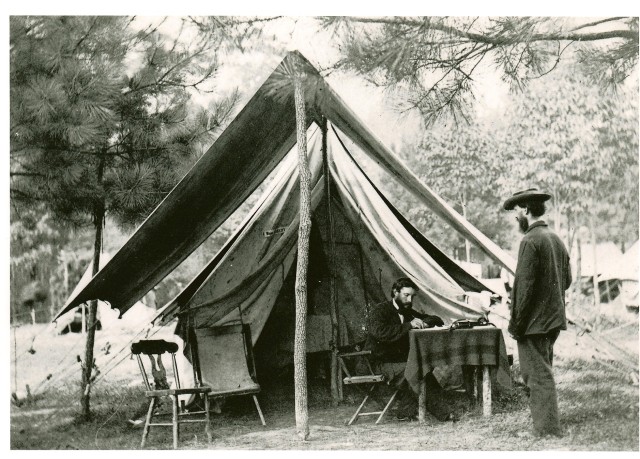ABERDEEN PROVING GROUND, Md. - As the Command, control, communications, computers, intelligence, surveillance and reconnaissance, or C4ISR, Center of Excellence springs to life with new people from across the C4ISR materiel enterprise, the campus' facilities reflect a collaborative concept for the future that houses research and development, acquisition, engineering, logistics, staff headquarters functions and more.
Yet, these modern facilities also build on the traditions of the past...of Fort Monmouth, of the Signal Corps, of pioneers in communications, and of decades of support to our Soldiers, according to Melissa Ziobro, historian from the U.S. Army Communications-Electronics Command.
"We decided on names for buildings within the Center of Excellence campus that highlight the spirit of innovation and a culture of technological advancement," she explained.
Aberdeen Proving Ground's Garrison Commander Colonel Orlando W. Ortiz approved the memorialization actions for the Center of Excellence campus in accordance with Army Regulation 1-33, "The Army Memorial Program."
The memorializations are:
*Building 6000, the campus auditorium, is now named for Brig. Gen. Albert James Myer, the father of the Signal Corps;
*Building 6001, HQ/BES East, for Col. Charles S. Wallace, who signed the contract with the Wright Brothers for the first military airplane in 1908;
*Building 6002, HQ/BES West, for FM radio pioneer Maj. Edwin Howard Armstrong;
*Building 6003, the GMS Lab, for Dr. Walter McAfee, the renowned physicist who helped put man's imprint on the moon for the first time with radar;
*Building 6006, the GMS Tower, for Night Vision pioneer Dr. Rudolf Buser;
*Building 6007, C2/CNT West, for Rear Admiral Grace Hopper, a pioneer computer programmer and co-inventor of COBOL (Common Business Oriented Language);
*Building 6008, the mission training facility, for Lt. Gen. Alfred Mallette, commander of CECOM during the Gulf War;
*Building 6009/10, C2/CNT East, for Col. William Blair, the "father of radar;"
CECOM Commander Maj. Gen. Randolph P. Strong; Program Executive Officer (PEO) for Command, Control, and Communications-Tactical Brig. Gen. Lee Price; former PEO for Intelligence, Electronic Warfare, and Sensors Thomas Cole; U.S. Army Contracting Command Contracting Center Director Mr. Edward Elgart; and former Communications-Electronics Research Development, and Engineering Center Director Mr. Gary Blohm constituted the board of leaders who selected the individuals to be memorialized.
While the new facilities represent a new chapter in these organizations' shared history, Maj. Gen. Strong said that "As we move to APG, the culture that has been created by so many amazing people will be moving too."
Naming buildings on the new campus provides just one opportunity to ensure that the organizations' retain their shared cultural heritage throughout the Base Realignment and Closure process, Ziobro said. Future efforts will include the relocation of monuments and memorials from
Fort Monmouth to the new campus, and the creation of several lobby displays featuring artifacts from the Army Museum System.


Social Sharing